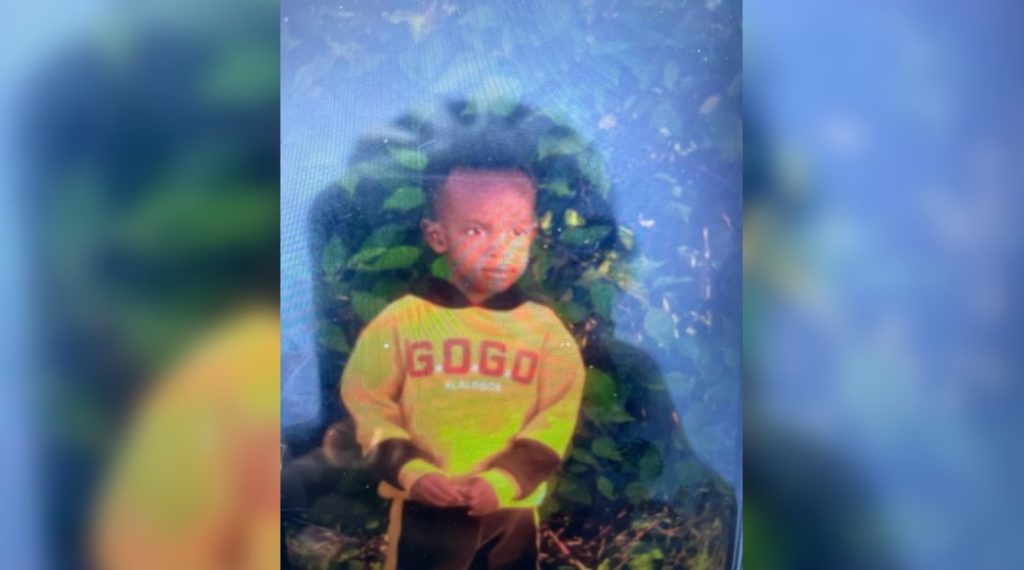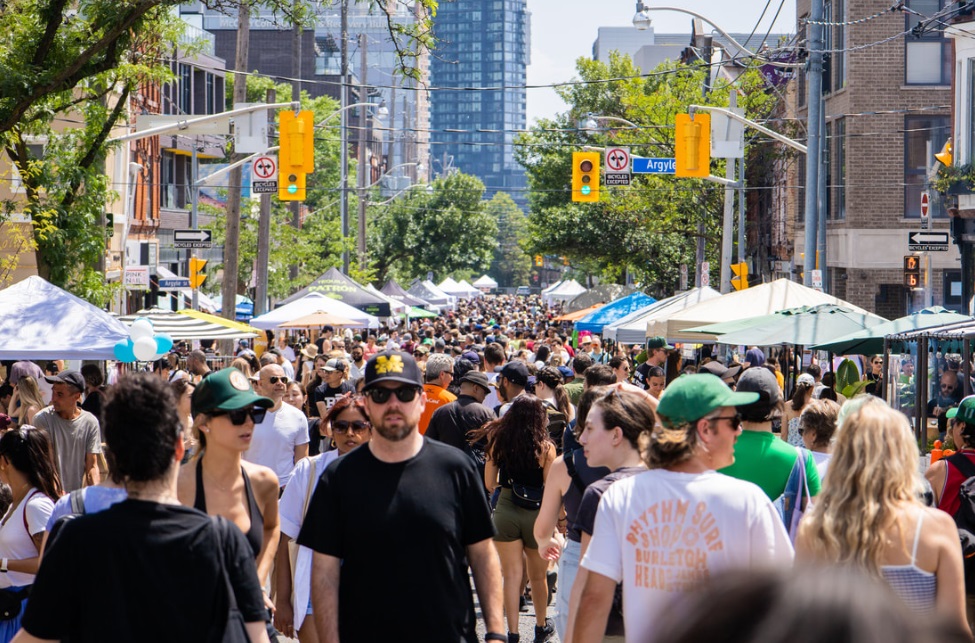Shelters reach crisis levels amidst spike in domestic violence
Posted February 13, 2020 12:32 pm.
Last Updated February 13, 2020 9:43 pm.
Friends and family of a young mother stabbed to death in Mississauga this week are speaking out about the barriers facing victims of domestic violence.
Brittney Newman, 25, was killed Sunday afternoon while her two young children were home with her.
Peel police have charged the father of the children with second-degree murder. The couple were separated at the time of her murder.
Newman’s family is understandably devastated, including her grandmother who shared a close relationship with her. Gabriele Vording-Newman spoke to her granddaughter only hours before detectives arrived at her Mississauga home to find her dead.
“I was mortified. I had hate. Every emotion that you could possibly fathom went through my system,” said Vording-Newman. “I was in utter shock. She was really a special, special girl and she was loved by so many people. There wasn’t a bad bone in her body, not a mean bone in her body.”
Family and friends say Newman and the suspect went to high school together, and had been in a seven-year relationship.
Vording-Newman adds that she never liked him because he was “manipulative, controlling, and the couple’s relationship was toxic.”
There were many times the family said they urged her to leave and two years ago, the couple split up.
“She had tried to get away from him and she finally did,” Vording-Newman said. “Completely new and fresh beginning. She truly believed in the future.”
A close family friend who has connections to a Mississauga shelter for women, helped the 25-year-old get out of the home and into a shelter.
Newman then spent some time in transitional housing before finally moving in to a basement apartment for herself and her two boys, aged five and three. There was excitement for this new chapter in her life, which included going back to school and getting a job. But Vording-Newman said though her granddaughter felt free, she was still dependent on the father of her kids.
“She was worried about the child-support and she needed the money for her children,” Vording-Newman said. “She did everything right, she couldn’t have done any better.”
“I don’t know how he got in the apartment because she didn’t want him there anymore,” Vording-Newman said. “He knew where she was living, and that was an issue. We told her as a family never to divulge that information.”
A crises point
Brittney Newman’s story is unfortunately not unique. Ask any front-line worker and they’ll tell you there aren’t enough resources available for victims and survivors of domestic violence.
The Ontario Association of Interval and Transition Houses (OAITH), a coalition that includes a series of services, advocacy and resources for women and children fleeing violence, is well aware of these rising challenges.
Marlene Ham, the Executive Director of OAITH, said financial independence continues to be one of the biggest barriers.
“They can leave but, if they still continue to be financially dependent on an abusive partner well after they leave, they’re still at considerable risk well after,” Ham said. “We certainly know that financial independence continues to be a barrier and also something that is contributing to that risk of continued violence and harassment.”
That’s why, Ham argues, it’s important to have access to resources like affordable childcare, adequate income support programs, and housing for women who are looking to leave their abusive homes or partners.
Ham adds that just because a woman physically leaves a relationship, it doesn’t mean that she’s safe or that the violence, harassment and control that she’s been experiencing, will stop.
“This is when we see our systems fail women, particularly our court systems,” Ham said. “Women can do all of these things and set it up, but it’s men’s behaviour that is continuing to perpetrate this violence they’re experiencing long after they’ve been through shelter and they’ve had those components to live independently.”
Every year, more and more women are reaching out to crisis lines in Ontario for help and support.
Ham receives annual data from the province which shows that between 2018 and 2019, there were 65,700 calls from women — which is a significant hike from 2016 and 2017, when there were 51,700 calls.
When asked why there was such a dramatic increase year-over-year, Ham says it’s likely due to the growing awareness around gender-based violence and the services available to women and children.
“While the crisis lines are often the entry point to getting information, accessing services and immediate support, survivors need more than a number to call,” Ham said.
Women’s Habitat, an emergency shelter for women and children who experience violence, has been operating in the GTA for 41 years.
Silvia Samsa, who’s been in the industry since 1983, said, years ago, the shelter would’ve helped 100 to 150 women and their children in a given year. Last year, they served 44. The number is low because women are forced to stay in a shelter longer, leaving those in charge to turn away other women who may need refuge.
“Every room is occupied every single night,” she said, adding that a lack of affordable housing is keeping women in shelters for longer periods of time. “For every woman who calls, I say we turn away about 20.”
Within a period of six months last year, the Assaulted Women’s Helpline had over 2,500 calls and they were able to shelter less than a quarter of those women because there was no space.
It’s obvious, she said, that the shelter system is at capacity and the beds available across the GTA for victims of domestic violence, isn’t enough.
In the past, Samsa says women who were ready to transition from the shelter system were able to get housed within a six week period. Now, despite the fact that these women are on a priority program, it can take at least a year for a woman to secure affordable housing.
“The program, although good-intentioned, isn’t meeting the needs,” Samsa said. “The solution can’t just be shelters, some women don’t want to go to shelters. It’s like a hamster wheel, women have a hard time getting in and then they can’t get out.”
“Women are dying to get in and then they can’t get out because of a lack of housing.”
Samsa adds that some women in the shelter system get frustrated, and end up entering the private market, where the housing market is much more competitive and they are faced with sky high rent prices.
Concerns over funding
With these shelters operating at capacity, funding continues to be one of the biggest concerns.
According to Ham, the funding of shelters is a complicated situation as after years of underfunding and increased demand, the numbers can’t seem to add up.
Most shelters, like Women’s Habitat, rely on government funding to operate. The previous Liberal government had promised shelters an increase of four percent annually, but with a new government in power, it no longer was an annual commitment.
Samsa said they did receive the four per cent increase last year, but won’t know until around April whether they will get the extra funding.
“Every single year we are worrying, ‘What’s going to happen next year?’,” said Samsa.
Not having that commitment, according to Ham, impacts all the shelters funded through the Ministry of Children, Community and Social Services (MCCSS). “This is impacting their planning and supports that they provide and creating unnecessary financial burdens.”
Kristen Tedesco, a spokesperson with the MCCSS, said the province is investing more than $172 million in supports for survivors and violence prevention initiatives, which include emergency shelters, counselling, 24-hour crisis lines, safety planning, a child witness program and transitional and housing supports.
In the GTA (Toronto, Durham, Halton, Peel, and York), the province is specifically providing $28 million to 26 ‘violence against women’ agencies that provide a total of 722 beds. These agencies are funded by the ministry and provide “transitional and housing supports” for women and their dependents who have or are experiencing abuse.
CityNews also asked the province for a breakdown of the funding the ministry specifically provides to shelters for women who experience gender-based violence year-over-year and what the funding might look like this year, but did not receive a response.
However, while millions in funding looks good on paper, those on the ground describe a system that needs to be overhauled. Higher operating costs and shelters bursting at the seams have forced those in charge to rely on the communities around them for fundraising.
“Up until two years ago, shelters had not received any kind of fiscal increase or annual increase to their funding in over ten years,” Ham said. “As a result, shelters have had to fund raise significant amounts of money to deal with the demand because we don’t want to be in a situation where we’re turning women away.”
Samsa adds that while housing is extremely important for women to escape gender-based violence, it is hardly the only thing needed to allow them to succeed.
One of the things Samsa mentioned she wished they could provide was scholarships and grants for women working towards becoming financially independent. Like in Brittany’s situation, despite going back to school and getting a job, she still relied on the father of her children to support them.
“Wouldn’t it be great if we could supply a little bit of a grant or scholarship for someone to go to school,” Samsa said. “[Right now] we are struggling to make sure that we can provide the services that need to be provided.”
Brittney’s legacy remembered
As Vording-Newman spoke about the close relationship she shared with her granddaughter, sadness filled the living room.
In the same room, two close family friends begin to sob quietly, oftentimes shaking their heads in agreement as Vording-Newman talks about how badly Brittney wanted to stand on her own two feet.
She had a determination to fight for herself and for her two boys, one of whom has autism. She wanted to make sure she could equip him with the tools he needed to be successful, and prior to her death, Vording-Newman said, he was thriving.
“She was just a pure beautiful soul in and out, and she loved and adored those children so much,” Vording-Newman said, fighting back tears.
Every year, shelters in Mississauga host an event to remember the women who were killed by men. This year, the group of friends say they’re in disbelief that Brittney will be added to that growing list. It’s the reason Vording-Newman says she is forced to speak out. She wants everyone to remember Brittney.
“There’s lots of spousal abuse, and there’s a lot of it in Mississauga especially,” Vording-Newman said. “There isn’t the support out there, no support whatsoever. We had no knowledge because there’s nothing out there really.”
She proudly scrolled through the photo gallery on her phone, sharing photographs of Brittney and continued to speak about the special relationship they shared. The pair would speak about everything often, a habit Vording-Newman doesn’t want to let go of.
“She loved me so much and she was such a good person,” she said. “I’m going to miss talking to her. I sent her a message on WhatsApp the other day, and I knew she was gone. But I wanted to reach out because she was my friend and she would talk to me about everything.”
A GoFundMe page has been started by Vording-Newman to raise funds for Brittney’s funeral.








